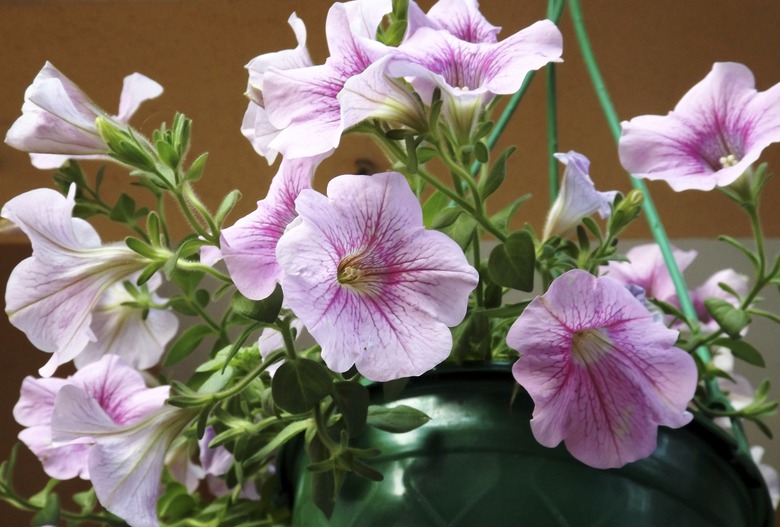Are Petunias Annual Or Perennial?
Knowing if petunias are annual or perennial flowers helps you understand their needs when growing petunias in your garden. Often referred to and grown as annuals, garden petunias (Petunia x hybrida) are technically warm climate perennials. They grow year round in U.S. Department of Agriculture plant hardiness zones 10 and 11. These brightly colored flowers grow quickly and flower abundantly, making them ideal for adding color to window boxes, flower gardens and planters. If you can't grow them year-round, grow petunias as annuals for dazzling spring, summer and early fall color.
Tip
Although most gardeners grow petunias as annuals, they're actually warm climate perennials.
Annual or Perennial Differences
Annual or Perennial Differences
A true annual goes to seed after flowering and dies shortly after that in all climates. Petunias act like annuals in frosty areas, dying back with the first cold snap. As a mild climate perennial, however, petunias have the ability to grow year-round in the right climate. They like mild, frost-free winters and summers that rarely rise above 90 degrees Fahrenheit, with low humidity. Most areas don't provide these specific requirements, so petunias are most commonly grown as warm season annuals in frost-prone areas and as cool season annuals in tropical and subtropical areas.
Warm Season Annuals
Warm Season Annuals
Plant petunias outdoors in the spring after the last frost date when the soil warms up to 60 F. Plant petunias from starts or seedlings. If you want to grow them from seed, start petunias indoors in a seed flat 10 to 12 weeks before your spring planting date. Plant starts in a spot that gets full sun at least six hours per day, with well draining soil. After the first frost, remove the spent petunia plants, and plan to replant starts in the spring.
Finicky Warm Climate Perennials
Finicky Warm Climate Perennials
In frost-free regions where summers tend to get hot, plant petunias in the fall. You'll have flowers through the winter and spring months. Often, petunias will fade or burn out in the summer when temperatures go above 90 F. When petunias get faded and wilted during a hot summer, remove them and then replant in the fall when temperatures drop back down reliably below 90 F. Petunias only grow year-round as a true perennial in areas with mild winters and cool summers.
Overwintering Petunia Plants
Overwintering Petunia Plants
While petunias are plentiful and relatively inexpensive at the beginning of the growing season it is possible, though they can be difficult to keep alive indoors, to overwinter the plants. If you grow your petunias in pots, you can simply bring those containers indoors for the winter months once the temperatures drop below 40 F. If the petunias are growing in the ground, dig out the root ball in the fall before frost, and transplant the petunias into nursery pots.
Keep them indoors in bright light through the winter, either in natural light from a window or under a grow light. If they suddenly stop getting the sunlight they need, the petunias can die. Water the petunia plants sparingly when the soil dries out, and mist the leaves with clean water every few days. Any room temperature area above 55 F but below 90 F will keep petunias happy through the winter. In the spring, replant the overwintered petunias outdoors.
